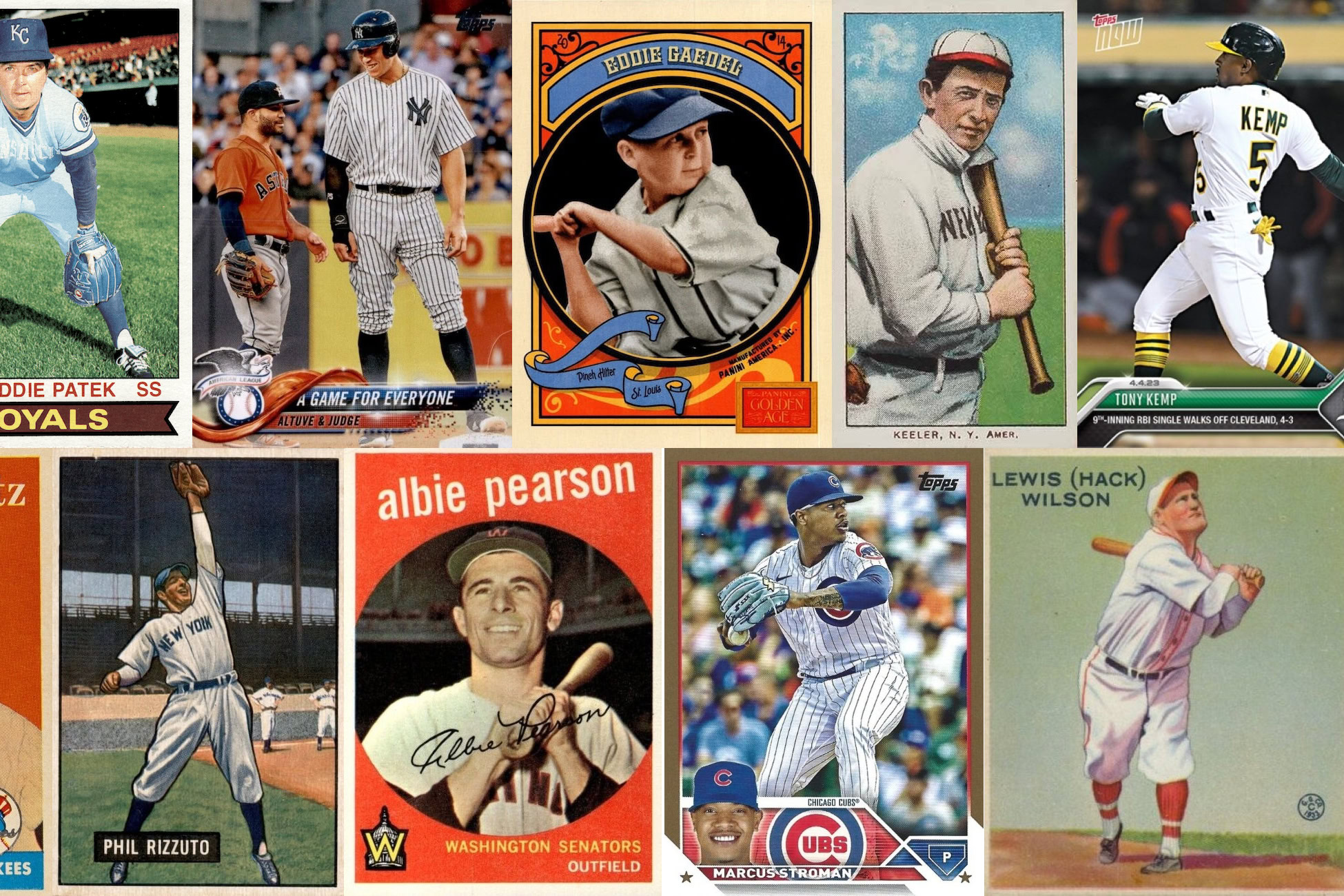Baseball has long been a sport that celebrates towering home run hitters and lanky pitchers with blazing fastballs, but what about the players who made an impact despite being overlooked – literally? The shortest baseball players in history may not have had the same physical presence as their taller counterparts, but they found ways to stand out through skill, determination, and, in some cases, pure entertainment value. Whether they were speedy baserunners, slick fielders, or just impossible to strike out, these players proved that size isn’t everything in America’s pastime.
While baseball’s tallest players often get attention for their imposing stature, the shortest baseball players bring their own kind of intrigue. Some defied the odds to become stars, while others became legends for a single unforgettable moment. Either way, their stories are worth telling. So grab your scorecard and get ready to meet the smallest players to ever take the field – because when it comes to baseball history, big things often come in small packages.
3 ft 7 in: Eddie Gaedel, pinch hitter (1951)
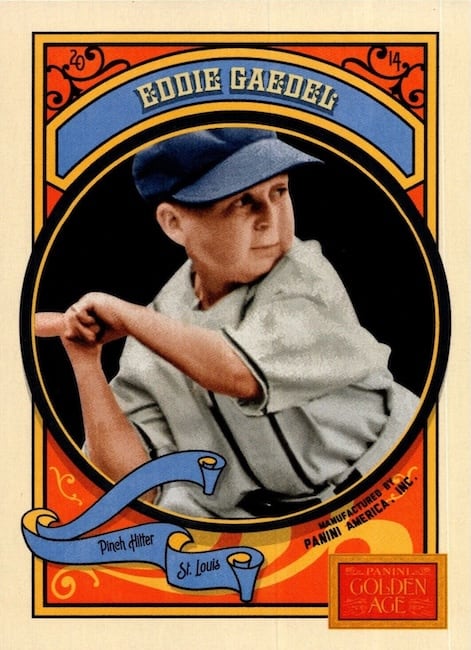
Most fans know the answer to the trivia question, “Who was the shortest baseball player of all-time?” It’s Eddie Gaedel, of course. Gaedel is remembered for his singular plate appearance in Major League Baseball. Age 26 and standing at just 3 feet 7 inches tall and 65 lb, Gaedel came to the plate as a publicity stunt from St. Louis Browns owner Bill Veeck on August 19, 1951. Wearing the number “⅛” on his jersey, he stepped up to bat against Detroit Tigers pitcher Bob Cain. With his tiny strike zone, Gaedel walked on four straight pitches. He trotted to first base, and was promptly replaced by a pinch-runner. His one and only at-bat made him an instant legend in baseball lore.
The stunt was met with both amusement and controversy, and the American League quickly voided Gaedel’s contract to prevent similar occurrences in the future. His legacy remains intact, with his story frequently recounted as one of the most bizarre and unforgettable moments in the sport’s history. Gaedel doesn’t have any baseball cards from his playing days (or, day), and but he does have cards that came out in subsequent decades, from the 1960s to present. Gaedel didn’t live to see his legacy in cardboard form, as he passed away in 1961 at the age of 36, after being attacked at a bowling alley. Bob Cain was the only player to attend his funeral.
5 ft 4 in: Wee Willie Keeler, outfielder (1892-1910)
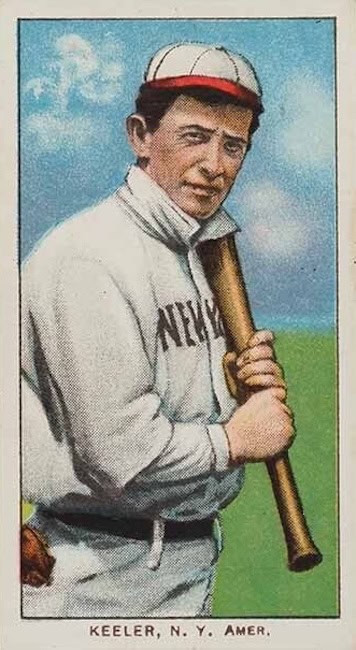
Wee Willie Keeler was one of baseball’s earliest stars, a slap-hitting outfielder whose motto, “Hit ’em where they ain’t,” perfectly captured his approach at the plate. Standing just 5 feet 4 inches tall and weighing around 140 pounds, Keeler relied on precision rather than power, using his remarkable bat control to spray hits all over the field. Playing from the 1890s into the early 1900s, he built a reputation as one of the toughest outs in baseball, compiling a lifetime .341 batting average and a legendary 44-game hitting streak that stood as a record until Joe DiMaggio shattered it decades later.
Keeler was a key figure for the powerhouse Baltimore Orioles of the 1890s, where he thrived in a lineup full of aggressive, innovative players. His ability to bunt, place the ball with pinpoint accuracy, and leg out infield hits made him a nightmare for opposing pitchers and infielders. Even as the game evolved toward a more power-driven style, Keeler’s skillset remained effective, and he continued to rack up hits well into the early 20th century. Inducted into the Hall of Fame in 1939, his legacy lives on as one of the finest contact hitters the game has ever seen.
5 ft 5 in: Freddie Patek, shortstop (1968-1981)
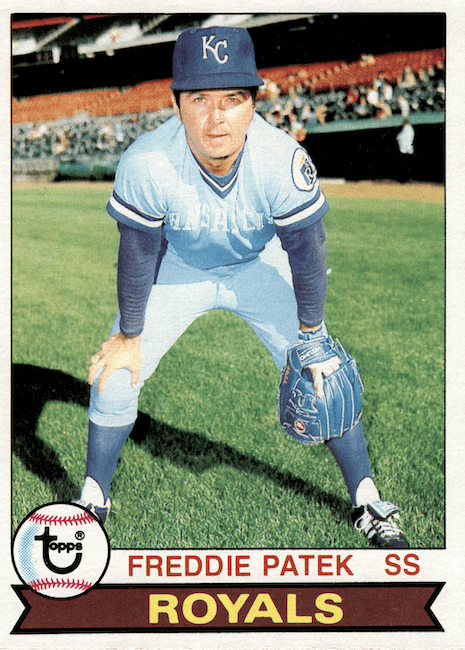
Freddie Patek may have been one of the smallest players in Major League Baseball history, but he played with a toughness and energy that made him stand tall on the field. At just 5 feet 5 inches, the scrappy shortstop carved out a successful 14-year career from the late 1960s through the early 1980s, becoming a key contributor for the Pittsburgh Pirates, Kansas City Royals, and California Angels. Known for his speed, defensive skills, and leadership, Patek was the kind of player who made things happen – whether it was turning a slick double play, stealing a base, or igniting a rally with a well-placed hit.
Though Patek wasn’t a power hitter, he made up for it with his aggressive style and high baseball IQ. He was a three-time All-Star with the Royals and played a crucial role in their rise to prominence in the 1970s. His quickness and reliable glove made him one of the better defensive shortstops of his era, proving that size was no barrier to success in the big leagues. A prolific autograph signer throughout his career, Patek was known to inscribe photos with, “I’d rather be the shortest player in the majors than the tallest player in the minors.” – a fitting attitude for a player who always found a way to compete.
5 ft 5 in: Rabbit Maranville, shortstop (1912-1935)
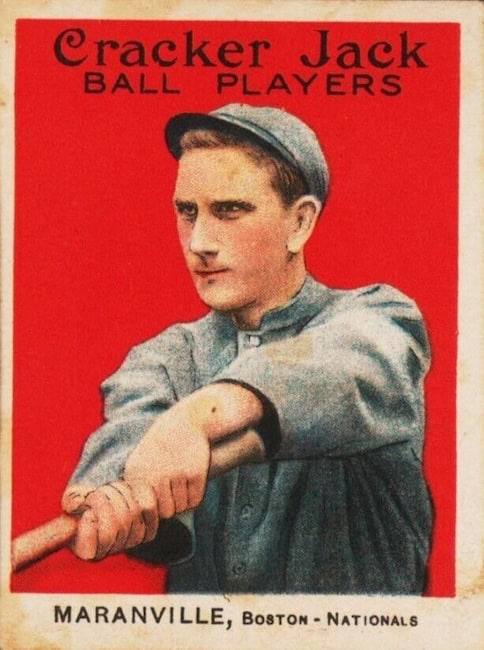
Rabbit Maranville was one of the most colorful characters in baseball history, a slick-fielding shortstop whose energy and defensive brilliance kept him in the major leagues for an astonishing 23 seasons. His nickname, “Rabbit,” came from his quickness and small stature – at just 5 feet 5 inches, he darted around the infield with the speed and agility of his namesake. Born in 1891, Maranville broke into the majors with the Boston Braves in 1912 and quickly established himself as one of the best defensive shortstops of his era. Over the course of his career, he also played for the Pittsburgh Pirates, Chicago Cubs, Brooklyn Robins, and St. Louis Cardinals before returning to Boston to finish his playing days.
Maranville wasn’t known for his bat – he finished with a career .258 average – but his glove kept him in the lineup year after year. His defensive prowess, combined with his fiery personality and leadership, made him a beloved figure in baseball. He helped lead the 1914 “Miracle Braves” to a shocking World Series title and remained a fan favorite for decades. Off the field, his reputation as a prankster and hard-living ballplayer added to his legend. Inducted into the Hall of Fame in 1954, Maranville left a lasting mark on the game as one of the best defensive shortstops to ever play.
5 ft 6 in: Joe Sewell, infielder (1920-1933)
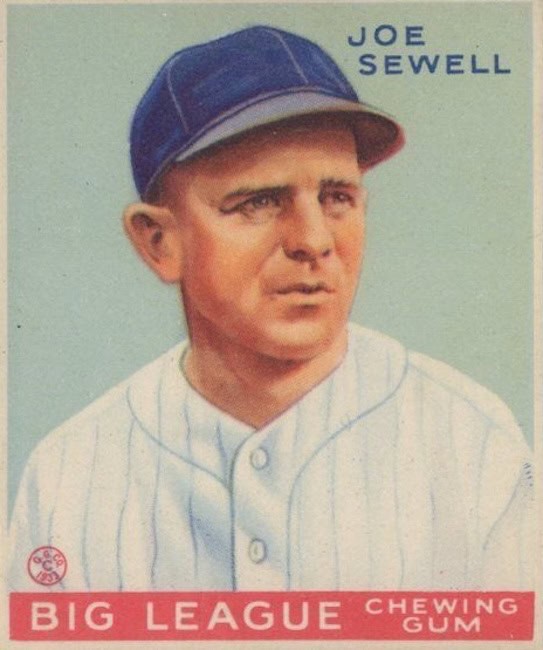
Joe Sewell was the definition of a contact hitter, a player who rarely struck out and consistently put the ball in play. Born in 1898, he broke into the major leagues in 1920 with the Cleveland Indians, stepping in as the team’s shortstop after the tragic death of Ray Chapman. Sewell quickly established himself as one of the toughest batters to retire, using a short, controlled swing and an almost uncanny ability to make contact. Over his 14-year career with Cleveland and later the New York Yankees, he struck out only 114 times in 7,132 plate appearances – a record for bat control that still stands today.
While his power numbers were modest, Sewell’s reliability at the plate and steady defense made him an invaluable player. He batted over .300 in multiple seasons and played a key role in Cleveland’s 1920 World Series victory. Later, with the Yankees, he helped guide the team to another championship in 1932. His disciplined approach and remarkable hand-eye coordination earned him a spot in the Hall of Fame in 1977. Even decades after his playing days, Sewell remained a symbol of consistency, proving that sharp batting skills could be just as valuable as raw power in the game of baseball.
5 ft 6 in: Billy Hamilton, outfielder (1888-1901)
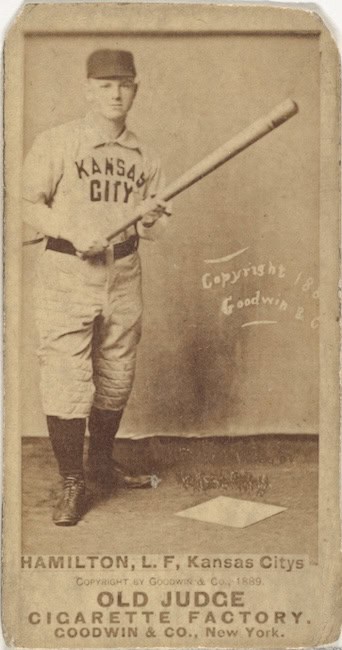
Billy Hamilton was one of baseball’s greatest speedsters, a 19th-century outfielder whose ability to get on base and swipe bags made him a nightmare for opposing teams. Playing from 1888 to 1901, primarily with the Philadelphia Phillies and Boston Beaneaters, Hamilton was a master at setting the table for his team’s offense. He finished his career with a staggering .344 batting average and 912 stolen bases, a mark that remained a record until Lou Brock surpassed it decades later. His ability to reach base was nearly unmatched – his career on-base percentage of .455 still ranks among the highest in baseball history.
Hamilton’s speed wasn’t just a tool for stealing bases; it also made him a dynamic defensive outfielder and a run-scoring machine. He led the league in stolen bases five times and crossed the plate an incredible 198 times in 1894, a single-season record that still stands. Though he played in an era before modern statistics were fully appreciated, his impact on the game was undeniable. The Baseball Hall of Fame inducted Hamilton in 1961, cementing his place among baseball’s all-time greats.
Interestingly, his name resurfaced more than a century later with the arrival of another Billy Hamilton, a modern-day speedster who, like his namesake, made a career out of stealing bases and covering ground in the outfield. That Billy Hamilton had an 11 year career in which he stole 326 bases. While the two played in vastly different eras, their shared reputation for blazing speed created a fun link between baseball’s past and present.
5 ft 6 in: Phil Rizzuto, shortstop (1941-1956)
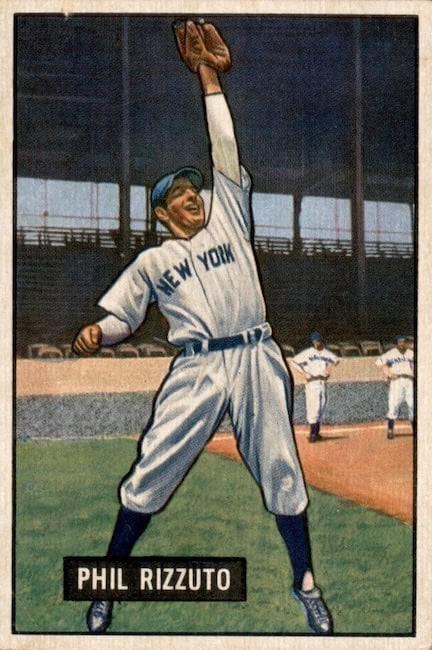
Phil Rizzuto was the heart and soul of the New York Yankees dynasty in the 1940s and 1950s, a slick-fielding shortstop whose leadership and defensive brilliance helped the team dominate an era of baseball. Though not a power hitter, Rizzuto was a steady presence at the plate and an exceptional bunter, often setting the table for the Yankees’ big bats. His best season came in 1950 when he won the American League MVP award, batting .324 and playing flawless defense as the Yankees captured yet another World Series title.
During his 13 seasons with the Yankees, Rizzuto helped lead the team to an astonishing seven World Series championships, making him one of the most decorated shortstops in history. His quick hands and sharp instincts made him a defensive anchor, while his energetic personality and team-first attitude made him a fan favorite. After retiring, Rizzuto became just as beloved in the broadcast booth, where his signature catchphrase, “Holy cow!,” became a staple of Yankees broadcasts for decades. Inducted into the Hall of Fame in 1994, he remains one of the most iconic figures in Yankees history.
5 ft 6 in: Jose Altuve, second baseman (2011-present)

Jose Altuve has spent his career defying expectations, proving that size is no barrier to greatness in Major League Baseball. Standing just 5 feet 6 inches tall, he is one of the shortest baseball players in the game today, but his impact has been anything but small. Since debuting with the Houston Astros in 2011, Altuve has become one of the most dynamic second basemen of his era, blending elite hitting, speed, and defensive ability. His relentless work ethic and aggressive approach at the plate helped him capture multiple batting titles, including a career-best .346 average in 2017, the same year he won the American League MVP award.
Beyond individual accolades, Altuve has been a cornerstone of Houston’s success, playing a key role in multiple postseason runs and World Series titles. His ability to deliver in clutch moments, particularly in the playoffs, has cemented his reputation as one of the best postseason performers of his generation. While controversy surrounded the Astros’ 2017 championship, Altuve’s talent and consistency have kept him among the league’s elite. His career serves as a reminder that in baseball, skill, determination, and heart can matter far more than height.
5 ft 7 in: Joe Morgan, second baseman (1963-1984)
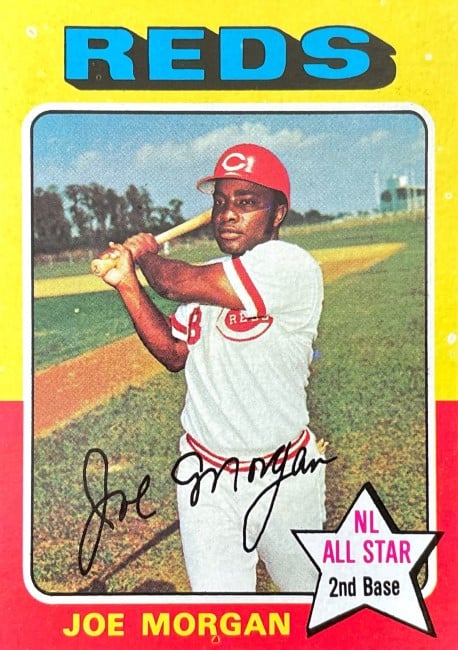
Joe Morgan was one of the most complete and influential players in baseball history, a Hall of Fame second baseman whose combination of power, speed, and defense helped define the Cincinnati Reds’ “Big Red Machine” dynasty of the 1970s. Standing at just 5 feet 7 inches tall, Morgan was the epitome of an undersized player who played much larger than his stature. With his quick hands, keen eye, and baseball IQ, he became one of the most feared players of his era. Over his 22-year career, Morgan amassed 2,517 hits, 268 home runs, and 689 stolen bases, but it was his mastery of the game’s nuances – particularly his ability to get on base and his sharp defensive skills – that made him truly exceptional.
Morgan’s peak came with the Reds, where he won two National League MVP awards (1975 and 1976) and was a key contributor to back-to-back World Series championships in those same years. He was a catalyst for the Reds’ powerful offense, setting the table for hitters like Johnny Bench, Tony Perez, and George Foster. His presence on both sides of the ball, combined with his leadership and clutch performances, made him one of the most complete players of all time. After retiring in 1984, Morgan continued to impact the game as a broadcaster and ambassador for the sport. His legacy remains as one of the greatest second basemen in history.
5 ft 7 in: Marcus Stroman, pitcher (2014-present)
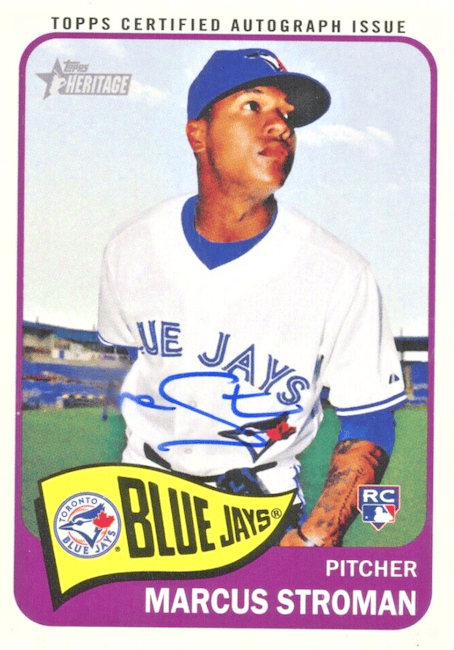
Marcus Stroman has made a name for himself as one of the most dynamic and skilled pitchers in Major League Baseball, despite being somewhat unconventional in terms of his physical stature. Standing at just 5 feet 7 inches tall, Stroman is notably shorter than many of his peers in a sport often dominated by towering pitchers who can push the ball past batters with sheer height and velocity. However, Stroman’s success comes from his elite ability to generate ground balls, his pinpoint control, and his relentless competitive spirit. His compact frame allows him to stay low and create a deceptive release point, often throwing batters off balance and making him extremely difficult to hit.
While many tall pitchers, such as Randy Johnson or Chris Sale, dominate with their long limbs and overpowering fastballs, Stroman has proven that height isn’t everything. His unique mechanics, combined with an exceptional sinker and breaking ball, allow him to succeed where others might struggle. He’s earned recognition as a consistent performer, including a standout season with the Toronto Blue Jays in 2017 when he earned an All-Star selection. Stroman’s story serves as an inspiring reminder that skill, heart, and strategy can overcome physical limitations in the world of professional sports.
